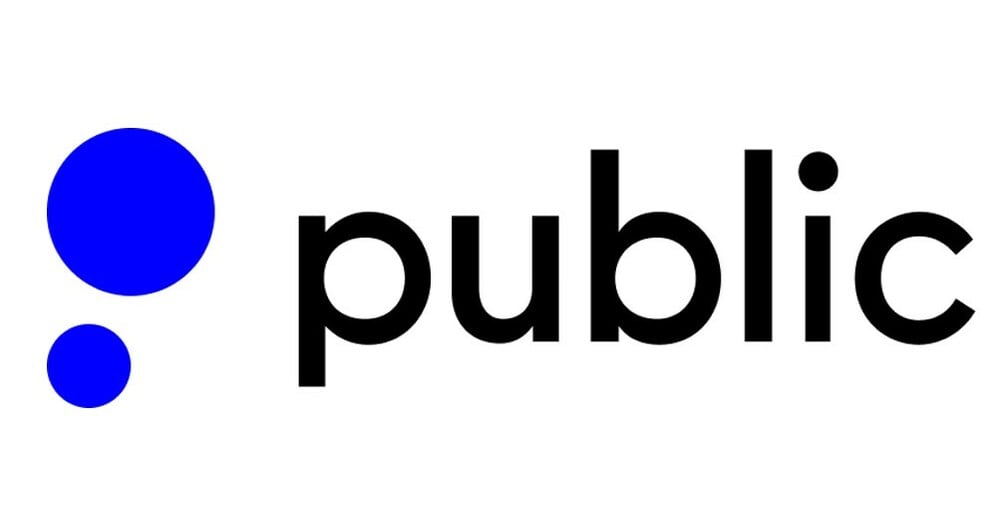M1 Finance Review 2024: Pros, Cons and How It Compares
Many, or all, of the products featured on this page are from our advertising partners who compensate us when you take certain actions on our website or click to take an action on their website. However, this does not influence our evaluations. Our opinions are our own. Here is a list of our partners and here's how we make money.
The investing information provided on this page is for educational purposes only. NerdWallet, Inc. does not offer advisory or brokerage services, nor does it recommend or advise investors to buy or sell particular stocks, securities or other investments.
Our Take
3.8
The bottom line:

Pros & Cons
Pros
Commission-free trades for stocks and ETFs.
Highly rated mobile app.
Dynamic Rebalancing feature ensures cash moving in and out of the portfolio helps maintain target percentages of each investment “Slice.”
High interest rate on uninvested cash.
Cons
Restricted trading windows.
Limited educational sources.
No options trading.
Compare to Similar Brokers
NerdWallet rating 4.8 /5 | NerdWallet rating 5.0 /5 | NerdWallet rating 4.6 /5 |
Fees $0 per online equity trade | Fees $0.005 per share; as low as $0.0005 with volume discounts | Fees $0 |
Account minimum $0 | Account minimum $0 | Account minimum $0 |
Promotion None no promotion available at this time | Promotion Exclusive! U.S. residents who open a new IBKR Pro account will receive a 0.25% rate reduction on margin loans. Terms apply. | Promotion Earn up to $10,000 when you transfer your investment portfolio to Public. |
Learn more on Charles Schwab's website | Learn more on Interactive Brokers' website | Learn more on Public's website |
Get more smart money moves — straight to your inbox
Become a NerdWallet member, and we’ll send you tailored articles we think you’ll love.
Full Review
In this review of M1 Finance
Where M1 Finance shines
A mix of customization and automation. M1 visualizes investment portfolios like a pie, with each slice representing different securities like stocks, exchange-traded funds (ETFs) and crypto. Investors can create their own pie or select and fine-tune pre-built portfolios called Model Portfolios, but in essence, there is a huge range of options for the investor who wants to create and automate their investment portfolio.
Dynamic rebalancing. A unique highlight of M1 is its automated Dynamic Rebalancing feature, which ensures that cash coming in and out of your account helps maintain your investment targets. An influx of cash might go toward slices that are under their target percentages, while a withdrawal of cash might be from slices that are over. However, while this process is similar to a robo-advisor, it isn’t entirely hands off — you’ll have to initiate the rebalance manually.
Where M1 Finance falls short
No options trading or mutual funds. While most brokerages offer these for further diversification and as a feature for advanced traders, investors wanting access to these two products won’t get that with M1.
Restricted trading windows. Unlike other brokers, M1 offers trading windows when your trades will be executed for you, rather than allowing you to trade at any point during standard market hours. The morning trading window starts at 9:30 a.m. Eastern. Account holders with $25,000 or more in equity can participate in a second trading window starting at 3:00 p.m. Eastern. Those with less than $25,000 in their accounts can pick one of the two trading windows. The company says this is to keep costs lower and help users maintain a focus on long-term investing, but it may not be ideal for active traders.
Limited knowledge bank. Experienced investors who want access to stock data and market research may find the two options offered by M1 to be more lean compared with its competitors.
Alternatives to consider:
For options and mutual funds: Fidelity
Better trading hours: Best brokers for stock trading
Better educational offerings: Fidelity
What type of investor should choose M1 Finance?
Beginner investors: The "pie" functionality helps visualize your investments in a way that may be helpful for new investors. As a sort of hybrid broker/robo-advisor, M1 may be a good choice for those struggling with getting started.
Reformed risky investors: If you have a history with risky investing and want to make a change, M1's limited trading windows may help curb the instinct to aggressively buy and sell. Plus, there isn't much access to higher-risk investments, like options. While active traders may not like these aspects, if you're trying to become a "boring" long-term investor, M1 may help you achieve that.
What the Nerds think 🤓

Chris Davis , investing editor and reviews lead
"I went from testing this app for work at NerdWallet to using it in my personal finances for one specific reason: the "pies" function. I love how easy it is to create my own portfolio of stocks and set an allocation for each. And then, with every recurring contribution, the amount is split up between the assets to meet that allocation.
"There are other brokers that offer this (Fidelity's "Baskets" come to mind), but M1 is cheap at $3 per month, and the fee is eliminated for accounts with balances above $10,000. You wouldn't use M1 as a trading app, but for long-term investors who want a mobile-first option, an easy way to build a portfolio and a simple interface for balancing asset allocation, this is a solid choice."
M1 Finance at a glance
Account minimum | $100 ($500 for retirement accounts). |
Stock trading costs | $0 |
Options trades | Options trading not available. |
Account fees (annual, transfer, closing, inactivity) | Annual fee: $36 (charged monthly) on balances under $10,000 Inactivity fee: $50 (charged on accounts with balances up to $50 with no trading or deposit activity for 90+ days) Partial transfer: $0 Full transfer: $100 |
Interest rate on uninvested cash | Over 4%. |
Number of no-transaction-fee mutual funds | None; mutual funds not available. |
Tradable securities | Stocks, ETFs, limited OTC securities and crypto |
Trading platform | Two: M1.com and mobile app. |
Mobile app | Available for iOS and Android. |
Research and data | Quotemedia and Factset. |
Customer support options (includes how easy it is to find key details on the website) | Customer support is available Monday through Friday, 9:00 a.m. to 4:00 p.m. Eastern. |
How to sign up for a M1 Finance account
Unlike other brokers, you have to submit an application to sign up for an M1 account. Within one business day M1 will let you know if your application has been approved. After that, you'll have to upload documents to verify your identity, which could take five to seven days. While M1 offers several types of accounts, including trusts, custodial accounts, cash and crypto accounts, you must first open an individual brokerage account or IRA before opening any additional accounts.
What to know about M1 Finance fees
There are no stock trading costs or commissions for investing on the M1 platform, but you'll need to maintain an account minimum of $100 for the brokerage account and $500 for retirement accounts. These figures may seem nominal, but many other brokers we review require no minimum for opening or maintaining accounts. There is also an inactivity fee of $50 charged on accounts with balances of $50 or below with no trading or deposit activity for 90+ days.
M1 charges a $3 monthly fee unless you meet one of two criteria: You either have an active M1 personal loan, or you have at least $10,000 in assets at M1. M1 defines $10,000 in assets as maintaining that minimum value for at least one day during each billing cycle.
There is also a $100 fee per outgoing transfer and a $100 individual retirement account termination fee. And while there is no partial transfer fee for transfers from brokerage accounts, the $100 fee applies to partial transfers out of IRAs, custodial accounts and trusts.
M1 Finance trading platforms and apps
Trading can take place on the M1 website and its mobile app. On the platform, users can access features like M1 Finance Auto-Invest, which automatically allocates deposits to each slice of your investment portfolio, as well as Dynamic Rebalancing, which automatically sells and buys stocks (after you've initiated the process) to ensure your portfolio stays within your target allocation. M1 has also introduced a dividend income tracker that shows past and future dividends.
While M1’s trading platform departs from a traditional broker, its features offer users a fresh way to invest and monitor their portfolio. The mix of automation and manual investing ensures that investors have flexibility over their investment decisions, although the trading windows limit users from being more active traders when the market is open.
Getting started within the M1 portal is relatively simple. Plaid integration means users can easily link their bank account, though this may not be an option for smaller banks. Once the M1 account is funded, users can make their investment selections in a process more similar to a robo-advisor, as investing with M1 doesn’t allow for individual stock selections.
M1’s mobile app is highly rated and offers the same features on the app that are available on the website.
M1 says that it does accept payment for order flow, or PFOF. Lately, regulators have examined the practice of PFOF, which involves pushing customer orders to market-making firms that pay for those trades, which can potentially create a conflict of interest.
Accepting payment for order flow can reduce execution quality and introduce more price movement, but those factors are less relevant on a platform like M1 that is designed for long-term investors instead of day traders.
How we nerd out testing trading platforms
Our reviewers — who are writers and editors on NerdWallet’s content team — test every online broker platform in our analysis hands-on. That way, we can report on every aspect of the user experience, from funding a new account to placing trades.
We score each broker against criteria that factor in the capabilities offered and the actual user experience of trading with those capabilities. This includes how easy it was to sign up for and fund a new account. Note that a broker may score very highly for the platforms it offers but low for the experience of actually using that platform. Our analysis scores these criteria separately and weighs them evenly when factored into the broker’s overall score. As a result, a broker can offer an advanced trading platform. Still, if it is clunky to use or the process of opening an account is unnecessarily arduous, their score will reflect that.
M1 Finance investment selection
Compared with many other brokerages, M1’s tradable securities offerings are much more limited.
M1 customers can purchase stocks and ETFs, but only limited over-the-counter securities and cryptocurrencies. M1 does offer fractional shares for those who want to include more expensive stocks in their portfolio without purchasing an entire share.
Investors on the M1 platform have access to over 6,000 securities. However, M1 notably does not offer mutual funds, which limits the diversification investors can have in their portfolio. Options trading, which may be a draw to experienced investors who understand the risk involved, is also not offered on the M1 platform.
Crypto offering: Like its selection of other tradable securities, M1 Finance's crypto offering is limited but usable for entry-level investors. It offers no-fee trades of Bitcoin, Ethereum and Litecoin for USD, although it does not offer crypto-crypto trading pairs, staking features, or the ability to use your own wallet.
Other key M1 Finance features
Customer support
M1 customer support is available through a contact form on its website and mobile app, email and phone. The team is available Monday through Friday, from 9:00 a.m. to 4:00 p.m. Eastern, unless there is a market holiday.
IRA account
M1 gives users access to traditional, Roth and SEP IRAs. You can also roll over old 401(k)s to IRAs. If you want to close your IRA at some point in the future, M1 does charge a $100 individual retirement account termination fee.
High interest rate on uninvested cash
Uninvested cash with M1 will be directed to its high-yield Earn account with an interest rate of more than 4% as of this writing.
Good to know about M1 Finance
Research and data
M1 provides investors with free stock research from Quotemedia and Factset. Both provide data to help investors make informed decisions, but with only two data platforms to choose from, the research firm offerings are much more limited compared with other brokerages.
Restricted trading windows
Unlike most other brokers, M1 offers two trading windows that you can choose from (unless you have $25,000 or more in your account, in which case you can trade during both windows). The first trading window starts at 9:30 a.m. Eastern and the second one starts at 3:00 p.m. Eastern. According to M1, the trading windows conclude when all orders have been completed. You can pick which assets you want to purchase at any time, but M1 will wait until your selected trading window to execute the trades for you. While this may be fine for long-term retirement investors, it likely won't work well for active traders who may want more flexibility with when and how they trade.
Is M1 Finance safe?
All investing comes with at least some risk, but M1 is covered by insurance and is registered with the necessary governing bodies.
M1 has FDIC insurance to protect cash deposits in checking and savings accounts once they are swept to partner bank accounts for up to $250,000. M1 is also covered by SIPC insurance. SIPC insurance protects brokerage accounts up to $500,000, but it doesn't apply to price fluctuations or investment losses. M1 is also registered with the Securities and Exchange Commission and FINRA.
Is M1 Finance right for you?
M1’s automated processes could be a good choice for investors who want a hands-off approach to reaching their investment goals. However, with limited educational resources and customer support, beginner investors may find the learning curve a little steeper if relying solely on the website and app. Additionally, while the limited trading windows encourage long-term investment planning, it may be challenging for investors who want to make trades on their own schedule.




